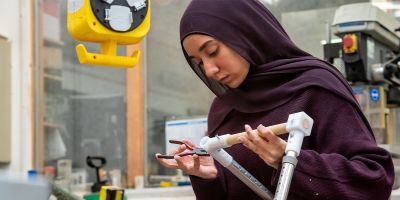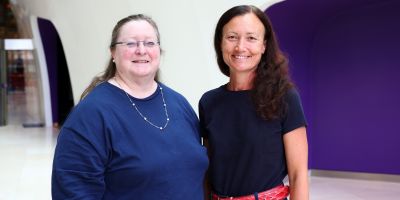EPS colleagues to present at distinguished Royal Society Summer Science Exhibition

Academics, post-doctoral researchers and PhD students from the Faculty of Engineering and Physical Sciences will contribute to this year’s Royal Society Summer Science Exhibition.
The Royal Society is the oldest national scientific society in the world, and the leading national organisation for the promotion of scientific research in the United Kingdom.
The Summer Science Exhibition is its most prestigious event of the year, attracting up to 10,000 visitors and significant media interest.
With only one in four applicants being chosen to present, this year’s event had a particularly competitive selection process.
Nanoscale Advanced Materials Engineering (NAME), a collaboration between the University of Leeds, the University of Manchester and University College London, is one of 14 successful applicants, and will be exhibiting its work on ‘Engineering atom-by atom’.
Dr Philippa Shepley is an experimental officer and Royce Technology Platform Lead from the School of Physics and Astronomy. She leads on NAME’s public engagement strategy at Leeds, including the planning and delivery of the upcoming exhibition.
She said: “Our research involves making and measuring very thin layers of materials with special electronic properties that can help to, for example, build better quantum computers or design more efficient electronic devices.
“In our exhibit we’re showing the stage of the process where, at Manchester, we add single atoms of different elements into our material to tweak the properties. This technique, called ion implantation, allows us to engineer materials on the atomic scale.”

Dr Philippa Shepley, using the Royce Deposition System at the Bragg Centre for Materials Research.
The exhibit will feature a variety of interactive elements – including a game involving a large, 3D display made of an array of LEDs that works as a model of the ion implantation – as well as provide opportunities for the team to talk to people about the applications of their research.
Dr Shepley said: “We hope that the exhibit helps people of all ages to visualise science and engineering on the atom-by-atom scale. We want to share the excitement of doing science by showing real measurements and we want people to have a fun, memorable experience.”
Professor Edmund Linfield, Director of the Bragg Centre for Materials Research, and Research Area Lead for Atoms to Devices within the Royce Institute, said: “I’m delighted the Royal Society has chosen Philippa to lead this presentation at the Summer Science Exhibition.
“Philippa’s leadership is testament to her hard work, innovative research, and passion for nanoscale technology, and I’m sure that she and her colleagues will inspire the next generation of young scientists in London this July.”
The NAME team have already taken their demonstrations to events including New Scientist Live and the Bradford Science Festival, as well as Be Curious.




